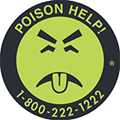The following definitions may help to clarify the terms that are used frequently in discussions of biological and chemical weapons.
Bioterrorism is the use of poisons or agents derived from living entities such as bacteria, viruses, and toxic plants. Examples of biological agents include:
- Bacterial agents such as anthrax – Bacteria are organisms that reproduce by simple division. Although they may produce deleterious and potentially lethal effects on the body, the diseases they produce often respond to treatment with antibiotics.
- Viruses such as smallpox – Viruses require living cells in which to reproduce and are intimately dependent upon the body they infect. Viruses produce diseases (the common cold, for instance) that typically do not respond to antibiotics, although antiviral drugs are sometimes effective.
- Toxins such as toxic poisons derived from plants, animals and bacteria – Toxins (such as the botulism toxin from the bacteria Clostridium botulinum) are poisonous substances that are typically extracted from plants, animals or microorganisms. Pharmaceutically developed antitoxins and medications can treat some toxins.
Chemical terrorism involves the use of chemicals to destroy life, injure humans and animals, and produce panic, disruption, and chaos.
It is important to remember that chemicals are the backbone of our daily lives. They exist in the food we eat, the clothes we wear, and the health and beauty aids we rely on every day. Good chemicals used improperly can cause problems, just as chemical terrorism agents can be destructive.
Chemical terrorism agents are poisonous vapors, aerosols, liquids, or solids that have toxic effects on people, animals or plants. They can be released by bombs, sprayed from aircraft, boats, or vehicles, or used as a liquid to create a hazard to people and the environment.
Some chemical agents may be odorless and tasteless. They usually have an immediate effect (a few seconds to a few minutes) or a delayed effect (several hours). While potentially lethal, chemical agents are difficult to deliver in lethal concentrations. Outdoors, the agents often dissipate rapidly. Chemical agents are also difficult to produce.
There are six types of chemical agents:
- Lung-damaging (pulmonary) agents such as chlorine
- Cyanide
- Blister agents such as mustard gas
- Nerve agents such as GA (tabun), GB (sarin), GD (soman), GF, VX and some pesticides
- Incapacitating agents such as BZ
- Riot-control agents (similar to MACE)

















